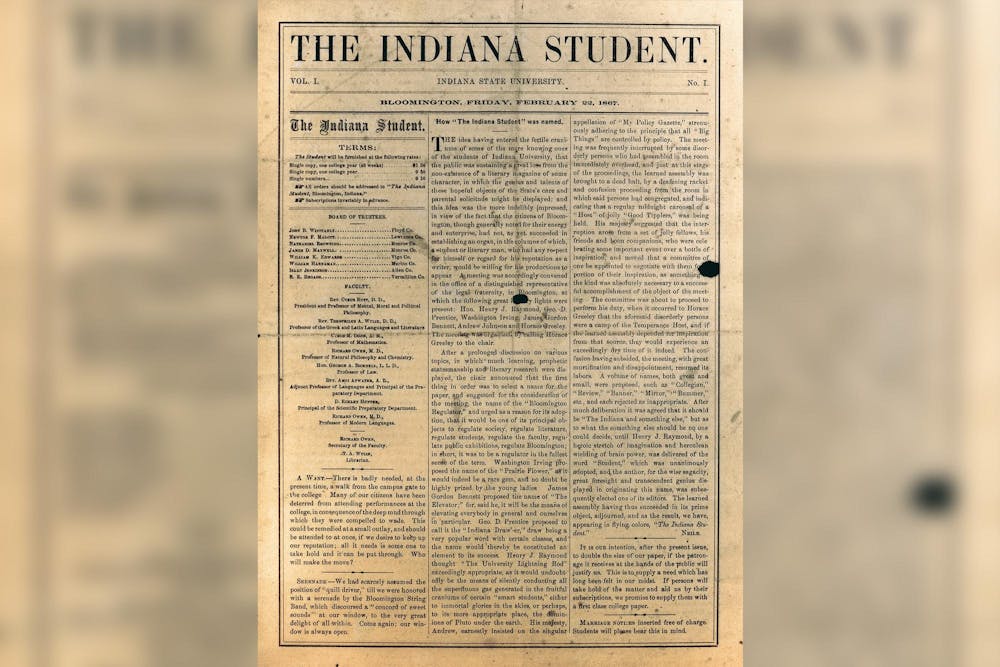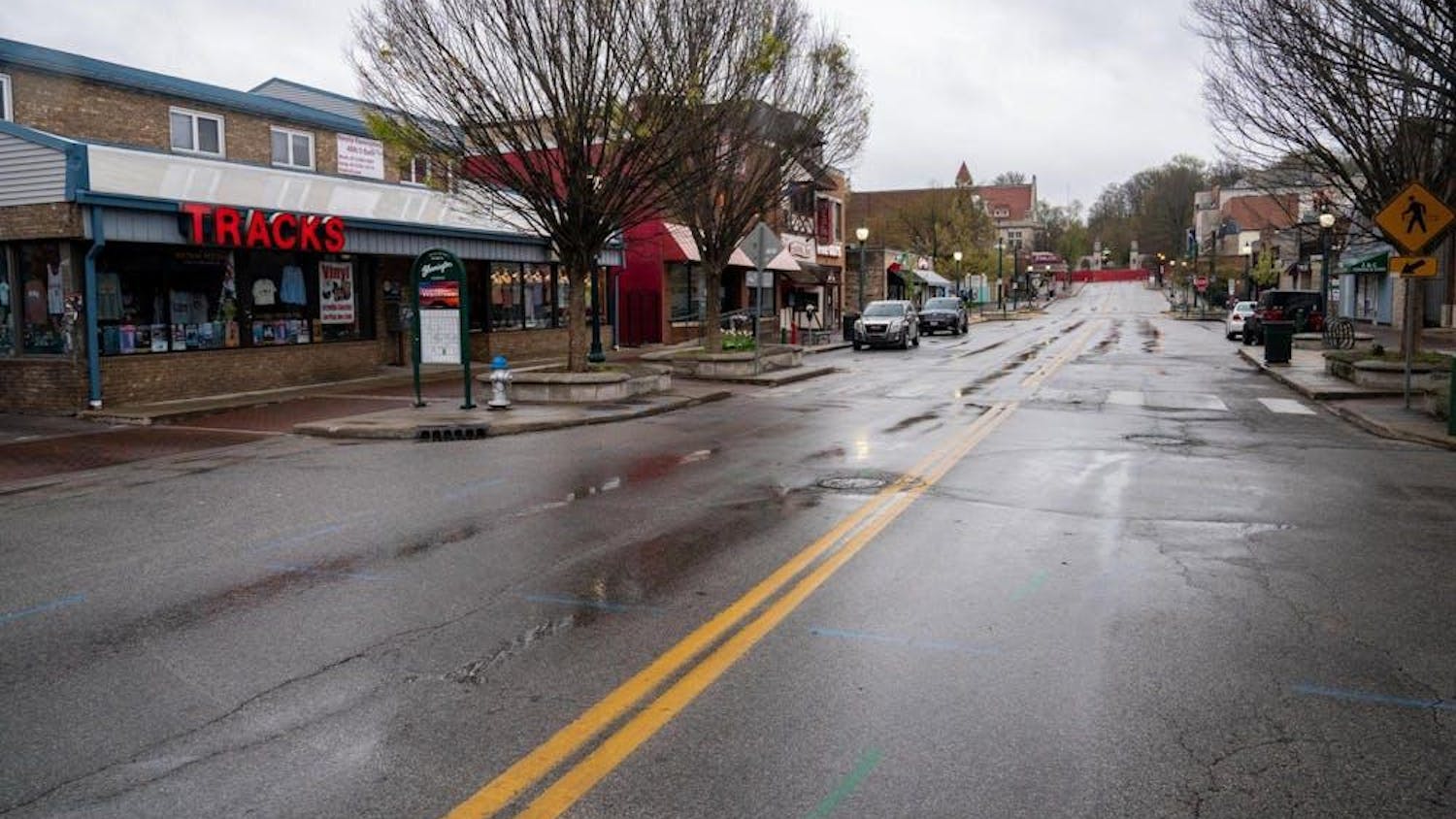Editor’s note: The IDS is looking for ways to keep its print newspaper. If you are interested in supporting or providing feedback on this initiative, please take a few minutes to fill out this short survey at https://forms.gle/cisJyhvAxuQbC4co7.
After the Media School released its plan to converge student media and cut the Indiana Daily Student’s weekly print edition, we stood in front of a full newsroom to deliver the news our student staffers had been entirely in the dark about.
Some staffers had already found out through the school’s press release, which was released Oct. 8, a day before administrators were scheduled to meet with journalism faculty and student media leaders to inform them of the plan. A copy of the report was leaked to the IDS before it was announced to the public. The Media School abruptly published a press release shortly after the IDS approached Media School Dean David Tolchinsky for comment in light of our breaking coverage.
As we explained what the news meant for the IDS, which has produced a regular print edition for 157 years, our design editor’s face fell.
We believe this plan was made with good intentions, but we do not believe it was made with proper consultation of the people who know the most about the IDS. That is clear throughout the report, where many ideas that sound good in theory have left our professional and student staffers wondering how they will work.
Since 2017, the IDS has undergone multiple reductions to its print edition, as well as its professional staff members — decisions that were made to combat the growing financial burdens that plague newspapers nationally. Years later, these cuts have not solved the deficit. The Media School’s latest decision — the first time a print cut has been mandated by administrators — will only perpetuate the problem.
We believe slashing print will have unintended negative consequences for our revenue. The plan poses a host of logistical problems associated with a reduced paper delivery schedule, such as the challenge of retaining delivery drivers.
We believe the idea that student media will generate significant revenue merely by converging business operations is naive — while IUSTV and WIUX are award-winning organizations that deserve far more reinvestment than listed in this report, the organizations do not have the audience the IDS has, making for a difficult pitch to advertisers.
Our already overworked marketing director will not be able to sell ads for WIUX and IUSTV without more support, and the Media School has not been clear about what concrete resources will be provided.
Perhaps more importantly, we know what the Media School is expecting from us — making a large converged newsroom with no direct university support revenue neutral within three to five years — is nearly unprecedented. One example of a profitable converged newsroom model that decision makers looked to was the University of Texas at Austin, but their student media has 15 professional staff members — three times as many as student media at IU.
We do not believe there’s any malice behind the Media School’s decisions. It is clear that the IU administration refuses to make any substantive funding a possibility. But we find the lack of communication and transparency insulting to our professional and student staffers.
This choice precedes a long line of decision-making harmful to the journalism program, beginning with the controversial move to turn the Journalism School into the Media School in the early 2010s. Critics at the time felt the switch would “decrease the presence and prestige of journalism” and “put journalism into a culture where it doesn’t fit.”
The shift is an example of how structural changes can set in motion a process full of unintended consequences. Conceding the weekly print edition will only set the stage for further destruction.
A weekly print publication is not something that can easily be revived, either. We already have contracts with advertisers in the spring, which our marketing director will presumably have to address. Repairing relationships with those advertisers in a world where print could be brought back would be time-consuming and potentially impossible.
There’s no question people don’t read print newspapers as much as they have in the past. But that doesn’t mean print is dead. In fact, respondents from the Monroe County Local News Survey said they preferred a printed newspaper to email digests, magazines, podcasts and TV, according to a printed topline report distributed at the Local News Summit on Sept. 25. The findings run contrary to the assumption we’ve heard frequently this semester. There are people in Bloomington that still value print.
Despite the uncertainties produced by the Media School’s plan, our staffers have continued to diligently report the news. During the Oct. 8 panel with Carl Bernstein, our managing editors stood in the back editing content that was set to publish. Our creative director, who has designed every front page this semester, also had her laptop open working on the newspaper — two hours after being told the weekly print was coming to an end.
Our newsroom advisor Ruth Witmer, who has worked at the IDS for 35 years, emphasized to us recently that Indiana University has all the pieces necessary to be a journalism powerhouse — including the IDS, which is one of the most decorated collegiate newspapers in the country.
“The success is something we’ve come to take for granted as being normal — it’s not normal, it’s extraordinary,” she wrote in an email Oct. 9. “The IDS is a rare gem of experiential learning on the IU campus that needs to be treasured and appreciated.”
To continue to be successful, the IDS and other student media need more than just words — it needs reinvestment. We cannot continue to exist without it.




